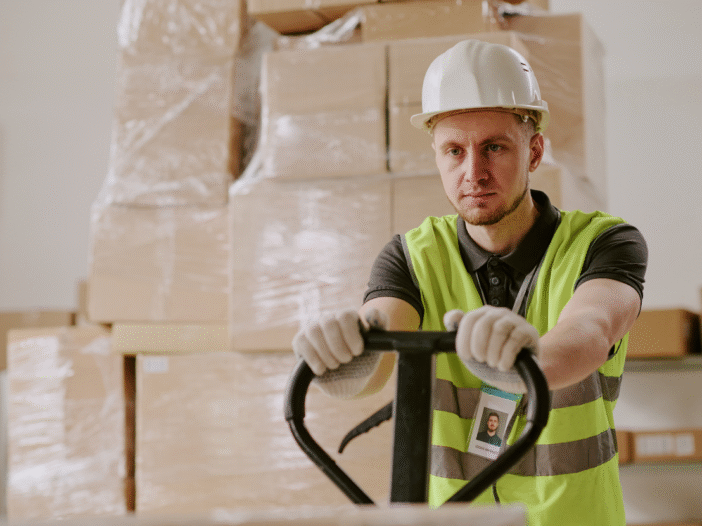
It is estimated that there are around 8 million lone workers in the UK, with 150 physically or verbally attacked every day, according to a recent British Crime Survey. It is an employer’s duty to protect lone workers as they would with other employees.
As an employer, you are responsible for the safety of your employees, including lone workers. This responsibility can prove challenging, primarily due to the inability to monitor their safety and be available immediately in case of an incident.
What is a lone worker?
Lone workers are employees who work by themselves without close or direct supervision. They can be a lone worker for all of their working day or just a part of it. Lone workers also include employees who work from home. Our Lone Worker Training can help these employees reduce potential risks from homeworking.
Some examples of lone workers include:
- Cleaners who may work alone domestically or commercially, especially at night or in a different part of the building away from others.
- Social workers and carers who may make house visits on their own or stay late in the office.
- Security guards who guard smaller sites alone.
- HGV and delivery drivers who drive alone.
- Estate agents who show clients around homes while on their own or travelling from one location to the next.
- Train and bus drivers
- Retail workers in charge of shops on their own
- Warehouse and petrol station employees who may be alone during night/closing shifts.
It’s important to note that lone workers can be a part of any industry and sector and include employees working on their own in the office for some time, such as when their colleagues are on their breaks, or they are working late.
Some lone workers are in high-risk jobs that involve dangerous equipment and activities, such as:
- Tree surgeons
- Gardeners
- Agricultural workers
- Laboratory workers
- Farmworkers
Risks a lone worker may face
Lone workers face the same hazards as other workers but working alone means they are more vulnerable to the following risks:
- Violence or abuse – Many lone workers face the risk of confrontation from a customer or member of the public.
- Delayed response to injury – If an accident or medical emergency occurs, a lone worker may struggle to get help.
Lone workers may also face mental health issues due to loneliness, stress or overworking.
What are an employer’s responsibilities?
There is no specific legislation to protect lone workers, but employers are under a statutory duty to ensure the health, safety and welfare of their employees under the Health and Safety at Work Act 1974. You must provide training and make reasonable adjustments to minimise potential dangers and risks to the health and safety of all employees. For lone workers, you have to train, supervise and monitor them, keep in touch throughout their duties and respond to any incidents.
You should provide lone workers with enough training to feel comfortable. Training should focus on areas such as risk assessments, monitoring and supervising their roles, and systems and procedures in place for reporting back or accident responses.
Managing lone worker risks
Lone workers require their own procedures and policies.
As an employer, you should set out a lone worker policy covering the risks these employees may encounter. The lone worker policy must also lay out the responsibilities of the employee and employer.
Employers need to provide sufficient risk assessments and consider the physical and mental capabilities of the employee regarding their work tasks. There are also several practical and actional practices you can put into place to help minimise risks.
Risk assessments
Separate risk assessments for lone workers are not a legal requirement, but it’s good practice to conduct them for the health and safety of the employee. These assessments should look at hazards and potential risks. Where possible, risks should be controlled and adjustments put into place to help reduce the likelihood of accidents.
Provide training
Training lone workers is especially important due to limited supervision in their duties. They need to be able to cope with unexpected situations and know what to do if exposed to violence while working. Ensuring they understand the risks and precautions involved in their work can help prepare them.
Training should include how to report accidents and incidents efficiently and what to do in emergencies, such as if they were attacked. Our health and safety awareness training course teaches managers, supervisors and employees the basics of health and safety, including recognising hazards and how to create a safety management plan.
Monitoring and communication
Embed a monitoring system to encourage clear and effective communication between you and the lone employee. Agree on intervals of regular contact; this can include phone calls, texts or emails. You should also implement a robust system of communication once the lone worker has returned or completed their jobs to make sure you’re aware of their safe return.
Solutions
If possible, set up CCTV and personal/premises alarms where the lone worker is based. Doing so gives the employee a chance to raise the alarm in an emergency, and video footage can be used for legal reasons if there is an incident.
CCTV can also be helpful if you cannot get hold of the employee, allowing you to see if they are at the location or need assistance.
Equipment and safety
For roles that involve equipment and machinery, such as tree surgeons or warehouse employees, ensure they are thoroughly trained and aware of workplace hazards and how to report them.
Ensure employees have the correct PPE and use it to reduce any risk to themselves or others.
Wellbeing support
Working alone can have an impact on an employee’s mental wellbeing. They may feel isolated or stressed due to workloads and pressure. Regular reviews should allow employees to voice concerns and check in with them regarding their mental and physical health. Failing to monitor an employee’s wellbeing can result in accidents or a decline in productivity or quality of work.
Our physical and verbal abuse bullying and harassment training course can help lone working employees recognise signs of harassment and what to do following any incidents.

Adam Clarke
Managing Director (Consulting)
